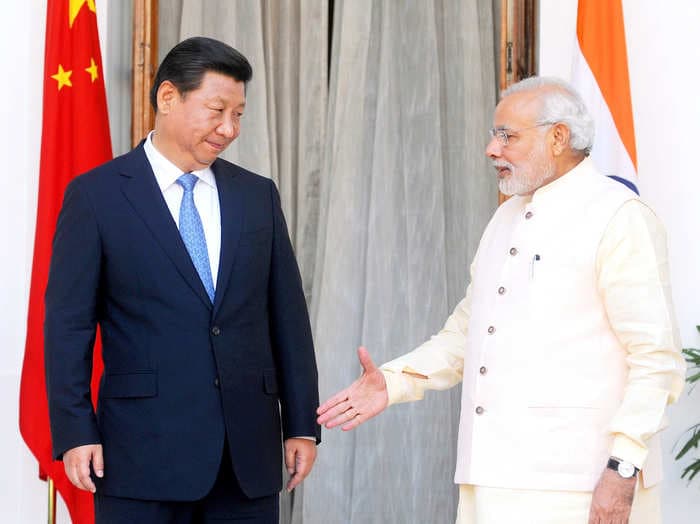- India and China have five treaties between them to address border disputes like the current tension along the
Line of Actual Control in Ladakh. - Experts believe that Chinese aggression along the border may only be masking other issues that the country is facing on the home front.
- Spokesperson for India’s Ministry of External Affairs, Anurag Srivastava, clarified said that India is ‘firm’ in its resolve to maintain national security along the border.
"Our troops have taken a very responsible approach towards border management and strictly followed the procedures laid out in different bilateral agreements and protocols with China to resolve any issue that may arise in the border areas,” said Srivastava. He outlined five treaties between the two nations that their disposal to address border disputes:
- 1993 agreement of maintenance of peace and tranquility along the LAC
- 1996 agreement of confidence-building measures in the military field along the LAC
- 2005 protocol on the modalities of confidence-building measures in the military field along the LAC
- 2012 agreement on the establishment of a working mechanism for consultation and coordination on India-China border affairs
- 2013 border defence cooperation agreement
Decoding China’s aggression
Even though the above treaties are in place for both sides to negotiate, “It is hoped that miraculously China may change, but for now, unless Xi Jinping mends fences, New Delhi must continue to frame policies assuming the worst about Beijing’s intentions,” said Gautam Chikermane, the Vice President of the Observer Research Foundation (ORF).
“This time around, China’s incursions may be another episodic distraction for its territorial ambitions in Hong Kong and Taiwan,” he added.
Retired Lieutenant General HS Panag believes that China is under the impression that India wants Aksai Chin back — and area of eastern Ladakh that was the central issue of the 1962 War. “My assessment is that the PLA has deployed maximum one brigade each in Galwan River valley and along the north bank of Pangong Tso,” he wrote in The Print.
Other experts like Harsh V. Pant, the director of studies and head strategic studies programme at ORF, and Kartik Bommakanti, an associate fellow also with ORF, believe that China may be trying to gain India’s support in the global investigation of the origins of the coronavirus — or may just be rooted in nationalism. “China is picking fights with multiple actors simultaneously amid an ongoing health pandemic precisely because of what it sees as a nationalist imperative,” they said.
Media reports claim that the People’s Liberation Army has crossed over to India’s side of LAC and physically secured three to four kilometres along the Galwan Valley in addition to the entire area between Finger 5 and Finger 8 along the northern bank of Pangong Tso Lake — which is around eight to ten kilometres.
“The two sides have established mechanisms, both at military and diplomatic levels, to resolve situations which may arise in border areas peacefully through dialogue. We continue to remain engaged through these channels,” Srivastava explained.
Modi isn’t in a ‘good mood’, says Trump
In lieu of US President Trump’s offer to help mediate on the ‘raging’ border issue, Srivastava said, “We’re engaged with the Chinese side to peacefully resolve this issue.”
Following which Trump told White House reporters, “I can tell you, I did speak to Prime Minister Modi. He is not in a good about what is going with China.”
“They have a big conflict India and China. Two countries with 1.4 billion people (each). Two countries with very powerful militaries. India is not happy and probably China is not happy,” he said when asked if he was worried about the border situation between India and China.
However, government sources told PTI that Modi and Trump have had no recent conversations. The last time they spoke it was about the
SEE ALSO:
China is reportedly adding troops on the Ladakh border and India is matching up to it
Donald Trump offers to mediate the ‘raging’ border dispute between India and China
Locust swarms are turning into a diplomatic issue between India and Pakistan
